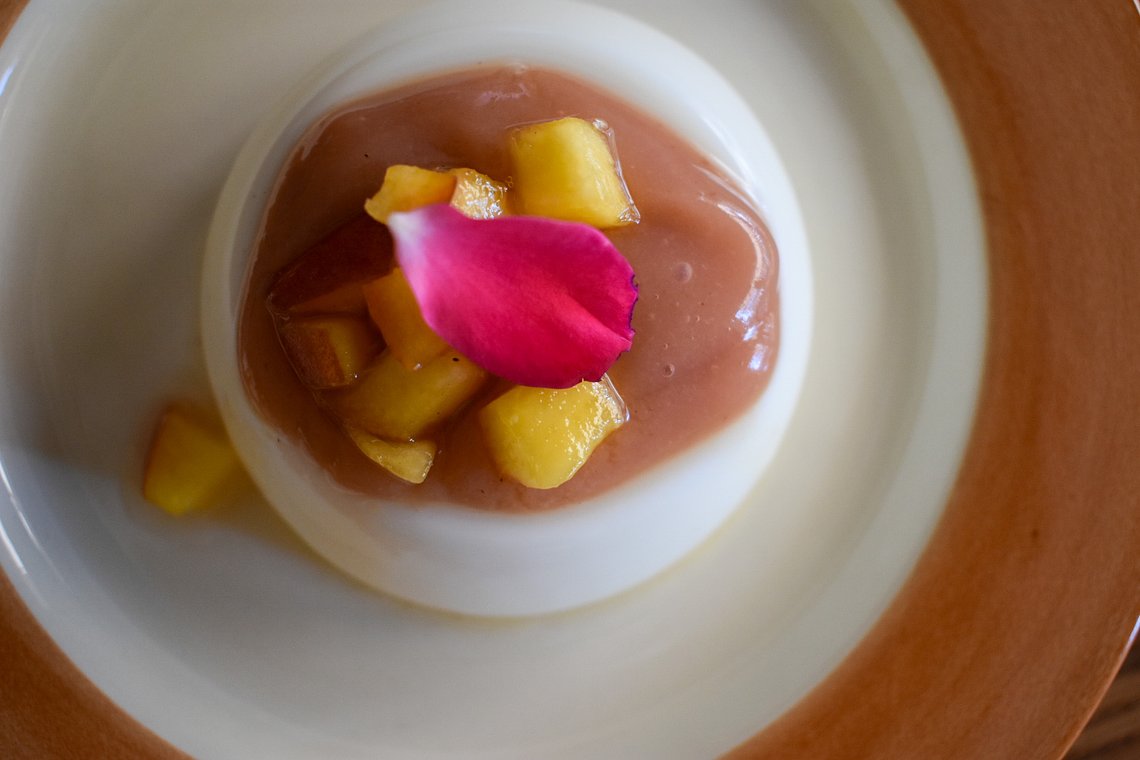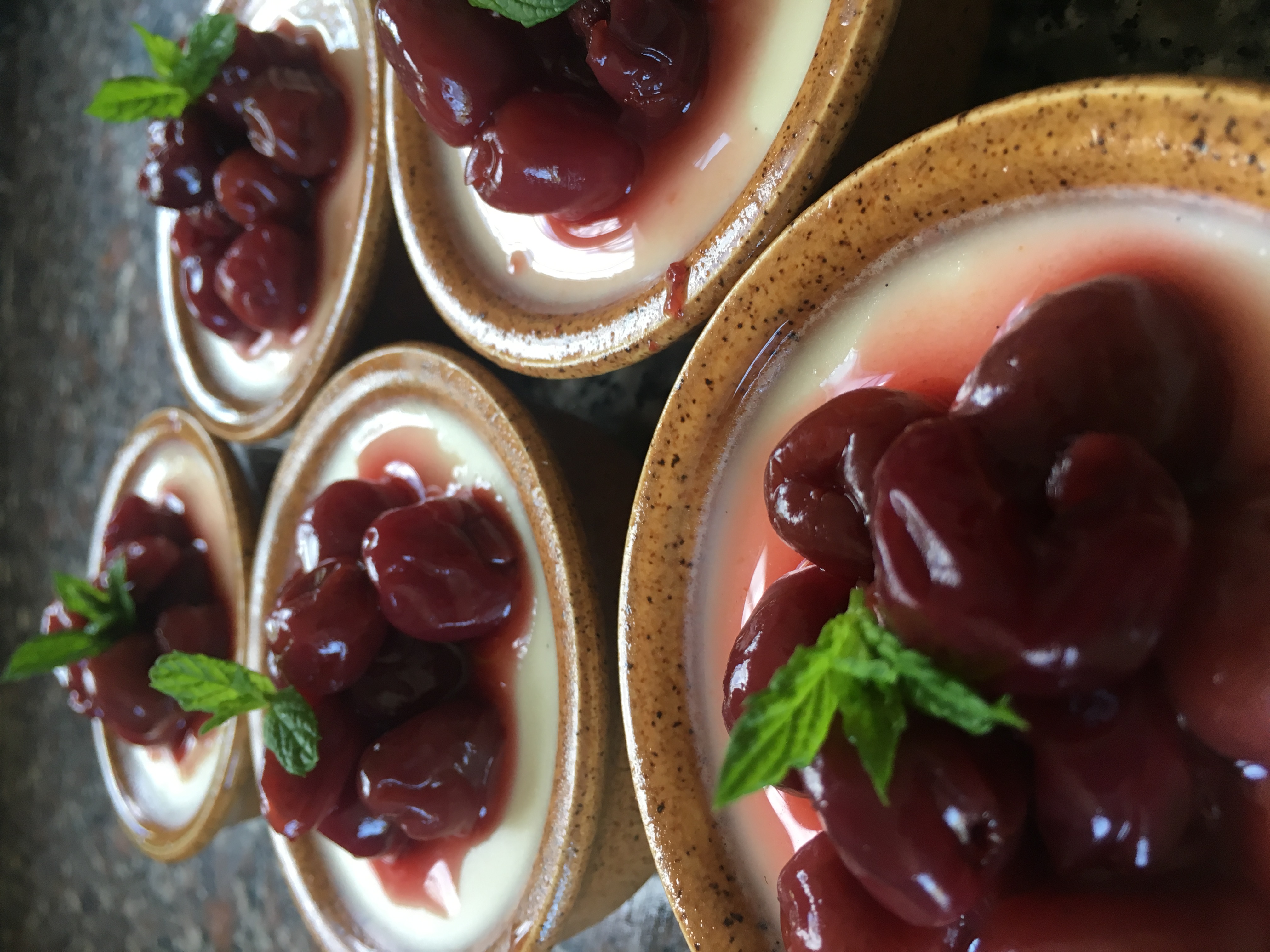Recipe: Perfect Panna Cotta - the essence of simplicity!
Many people I’ve spoken to seem to have an irrational fear of making panna cotta. With a faraway look of dread in their eyes, they tell me of the experiences that have scarred them - lumpy bits of gelatine...overset consistencies...thick skins forming on the surface!

Posted on Tue 22 Jan 2019 · by Oliver Haenlein
Well, my friends, I am pleased to be able to inform you that you have nothing to be scared of! It’s super simple, and once you have a reliable recipe and the right method, you’ll find putting together a perfect panna cotta about as easy as putting on your socks in the morning.
You can infuse different flavours into your mix, but at CED we usually keep it simple with a basic vanilla panna cotta, served with seasonal fruit. There’s something ultra delicious about the combination of thick, rich set cream and sweet, sharp fruit.
We are blessed with abundant fruit trees around us here in Tuscany, mostly growing wild. So with the course of the seasons we can pair our panna cottas with whatever is ripe and beautiful at that moment. Some fruits work better as a coulis drizzled on top, some chopped and macerated with a little lemon juice and sugar. This year we’ve used strawberries, sour cherries, apricots and white peaches at different stages. Right know we’re surrounded by figs and blackberries, the latter works especially well as a thick and syrupy coulis spooned over the panna cotta.
Anyway, less chatter and more cotta. Below is our foolproof recipe. We simply pour the mix into a ramekin and once it's set, serve it as it is. If you’d rather be a bit fancy and serve the panna cotta turned out of a mould on a plate, use a thin sided ramekin or mould, and once set, dip the outside into hot water quickly. This will release the panna cotta from the inside of the mould and allow you to turn it out on to a plate more easily.
By the way, if it’s of interest, ‘panna cotta’ literally means ‘cooked cream’ in Italian!

Serves 4
- 250ml double cream
- 170ml full fat milk
- 60g sugar
- 1 vanilla pod cut in half, or a few drops of vanilla bean paste
- 5g gelatine sheets
1 First up, get your gelatine sheets soaking in a bowl of cold water. You won’t have any problems with bits of gelatine in your panna cotta if you ensure you soak them first, even if it’s only for 15 minutes.
2 Put the sugar, vanilla, cream and milk in a saucepan and heat, whisking well to make sure the sugar is dissolved and everything is mixed. When the mixture is just boiling, take off the heat.
3 Once the pan is off the heat, take the gelatine sheets out of the soaking water and whisk into the cream-milk mixture. Since the mix is hot, and the gelatine has been soaked, the gelatine will dissolve easily once mixed in well with a whisk.
4 Pour the mixture through a small sieve into a pouring jug. This will ensure there are no bits of any kind (vanilla pods etc) in your panna cotta. Then pour the mixture from the jug into your 4 ramekins or moulds. Use smallish ramekins - it’s a rich dessert so you don’t need much! For the perfectionists - once poured, if there are bubbles on the surface, run a lit lighter over and around the top of the ramekin and they will disappear, giving you a perfectly smooth surface.
5 Refrigerate and allow to set. Ideally do them the night before, or at least in the morning if you intend to serve them that evening. Serve with a seasonal fruit - it could be a coulis, puree, or chunks macerated for a few hours in sugar and lemon.
6 Enjoy your silky smooth, perfectly set panna cotta!
